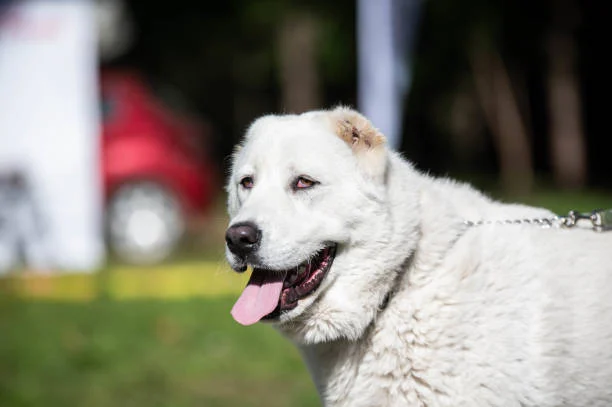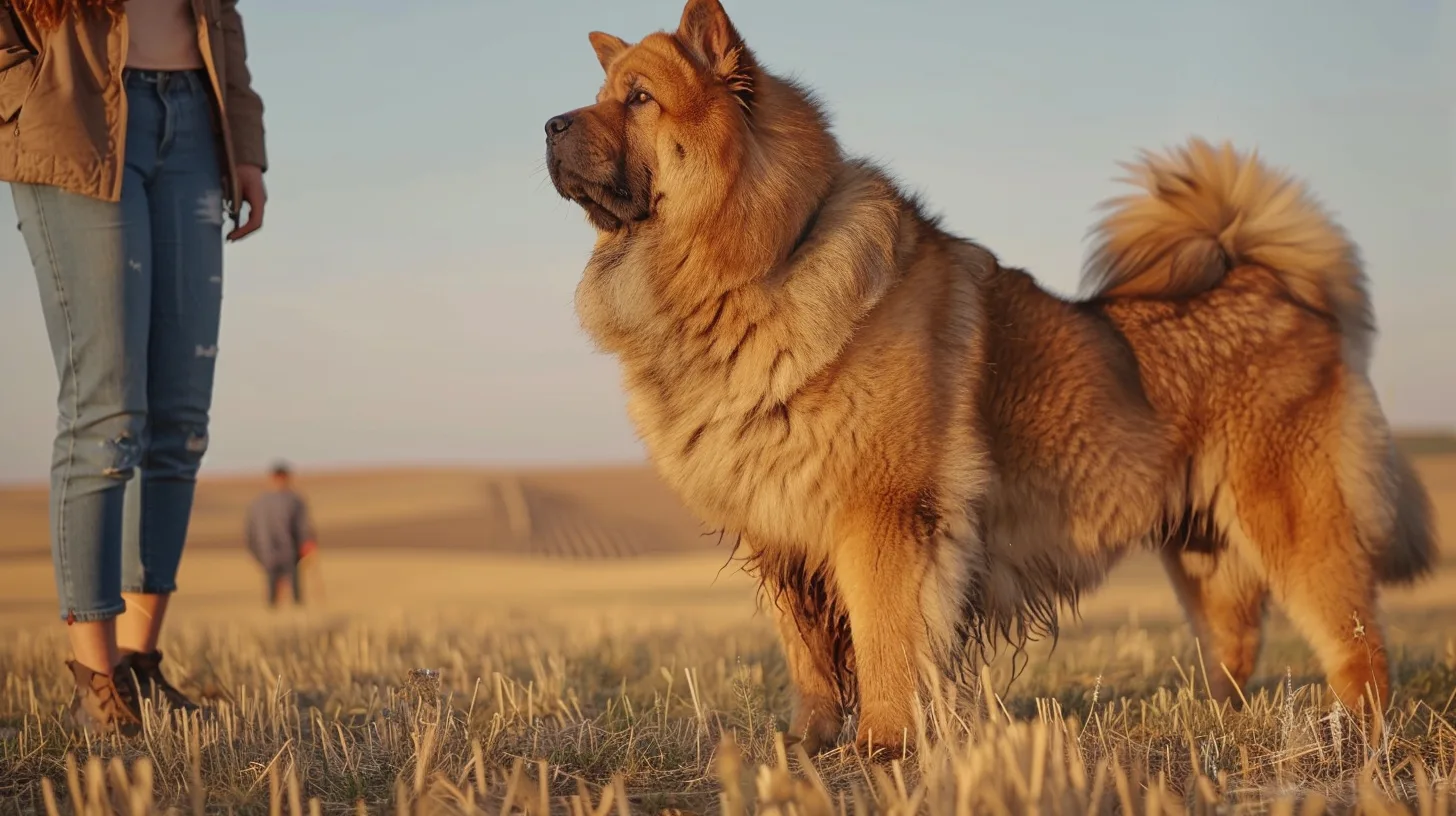In the vast steppes of Central Asia, a dog breed has stood the test of time as a formidable guardian—majestic in size and temperament. The Central Asian Shepherd Dog, also known as the Alabai, is one of the oldest and most resilient breeds in the world. With a lineage dating back over 4,000 years, this powerful breed has protected livestock from wolves, bears, and even snow leopards. But beyond its fearsome reputation, understanding the Central Asian Shepherd Dog size is essential for anyone considering welcoming this breed into their life. Learn something exciting about Queensland heeler.
Central Asian Shepherd Dog Size: An Ancient Guardian with Imposing Proportions
At first glance, the Central Asian Shepherd’s sheer size is impossible to ignore. Males typically weigh between 110 to 170 pounds and stand as tall as 32 inches at the withers, while females, though slightly smaller, still command respect at 90 to 140 pounds and heights ranging from 25 to 28 inches. This size is not a modern exaggeration but a direct result of centuries of natural selection and human-guided breeding for strength, endurance, and resilience in harsh environments.
The Central Asian Shepherd Dog size plays a vital role in their effectiveness as guardians. In the mountainous regions and remote plains where predators roam, only a dog with a commanding physical presence can stand its ground. Their massive frame, broad chest, and powerful limbs make them a natural deterrent.
Growth Patterns: From Puppy to Protector
From birth, the Central Asian Shepherd grows at a rapid pace. At two months, a typical puppy may weigh up to 30 pounds, and by six months, it can easily reach 80 pounds. During the adolescent period between six to twelve months, they continue to grow in height and mass, steadily filling out their frame. Most reach their full adult size by 18 to 24 months, but some may continue maturing until they are three years old.
This accelerated early growth makes proper nutrition and exercise essential. Overfeeding or providing poor-quality food during growth phases can lead to joint problems or obesity, while excessive exercise can damage developing bones. Puppy owners must walk a careful line, ensuring their growing Central Asian Shepherd receives enough stimulation without overexertion.
The Role of Genetics and Environment in Size
Like all breeds, genetics plays a pivotal role in determining the final size of a Central Asian Shepherd. Dogs from working lines bred specifically for guarding flocks in rural areas may be larger and more rugged than those bred for companionship. Reputable breeders often prioritize size, strength, and temperament, producing pups that grow into capable adults. On the other hand, poorly managed breeding programs can result in inconsistencies, both in size and health.

Environment also plays a supporting role. A puppy raised in a space where it can move freely and engage in moderate exercise will likely develop strong muscles and joints. Conversely, confinement or lack of physical stimulation during growth can hinder development.
Coat, Color, and Weather Adaptability
Aside from size, the Central Asian Shepherd’s thick double coat is another notable characteristic. Designed for survival in extreme climates, their coat provides insulation from both sweltering heat and biting cold. Colors vary widely—from pure white to brindle, fawn, black, or even sable.
This fur, while beautiful, requires regular grooming. Owners must be prepared for seasonal shedding and maintain their dog’s coat to avoid matting and skin conditions. While the coat doesn’t influence size directly, it adds to the dog’s overall imposing appearance and affects how well they manage weight in varying temperatures.
Health Implications of a Large Size
With large size comes the potential for specific health challenges. Hip dysplasia is particularly prevalent in breeds like the Central Asian Shepherd. Regular veterinary screenings, joint supplements, and maintaining a healthy weight are all essential preventive measures.
Bloat, or gastric torsion, is another concern. It’s a dangerous condition where the stomach fills with gas and twists, cutting off blood supply. To minimize risk, experts recommend feeding several smaller meals per day and avoiding intense exercise around mealtime.
Additionally, the heavy build of the Central Asian Shepherd can predispose them to arthritis in later life. While their musculature supports their joints in youth, years of bearing significant weight can take a toll. Low-impact activities like swimming can help older dogs maintain strength without stressing joints.
Temperament and Behavior: Influenced by Size
The breed’s formidable size heavily influences its behavior and role in a household. Central Asian Shepherds are inherently independent and territorial. They require confident, experienced handlers who understand canine body language and dominance hierarchies. Training must begin early, and due to their protective nature, socialization is critical.
Their size also affects living conditions. While surprisingly calm indoors, they need plenty of outdoor space to roam and fulfill their guardian instincts. Apartments or small yards are unsuitable, as the breed thrives in open areas where it can patrol and feel useful.
Training and Exercise Needs
Despite their bulk, Central Asian Shepherds are agile and capable of impressive physical feats. They need at least an hour of exercise daily, though the intensity should be adjusted depending on age and health. Young puppies should engage in light play and short walks, while adults benefit from structured activities such as obedience drills, patrol routes, or pulling carts.
Training a dog of this size is a significant undertaking. An untrained Central Asian Shepherd can easily overpower an adult human, making early obedience work vital. Commands like sit, stay, and recall must be second nature. Positive reinforcement, combined with assertive leadership, yields the best results.
Why Size Matters in Ownership
The Central Asian Shepherd Dog size isn’t just a point of trivia—it’s central to the breed’s identity. Potential owners must prepare for the responsibilities that come with caring for such a large animal. From finding appropriately sized gear like collars and beds to budgeting for larger food portions and potential veterinary costs, owning a Central Asian Shepherd is a long-term commitment. Know more in the video:
Size also impacts how the dog interacts with children, other pets, and strangers. While many Central Asian Shepherds are gentle giants with their families, their instinct to guard can lead to wariness or aggression if not properly socialized. Owners should be mindful of their dog’s presence in public and use proper restraints when necessary.
Final Thoughts
Understanding the Central Asian Shepherd Dog size is more than admiring its towering figure—it’s about appreciating the breed’s unique heritage, strengths, and needs. With the right care, these dogs transform into loyal companions and fearless protectors. Their size is not just a physical trait; it embodies their role as sentinels of the steppes, unyielding in duty and unmatched in presence.
For those ready to embrace the challenge and beauty of owning a Central Asian Shepherd, the rewards are vast. Their loyalty, intelligence, and unwavering dedication make them unforgettable additions to the right family—one that respects and understands the remarkable scale of this ancient guardian.

